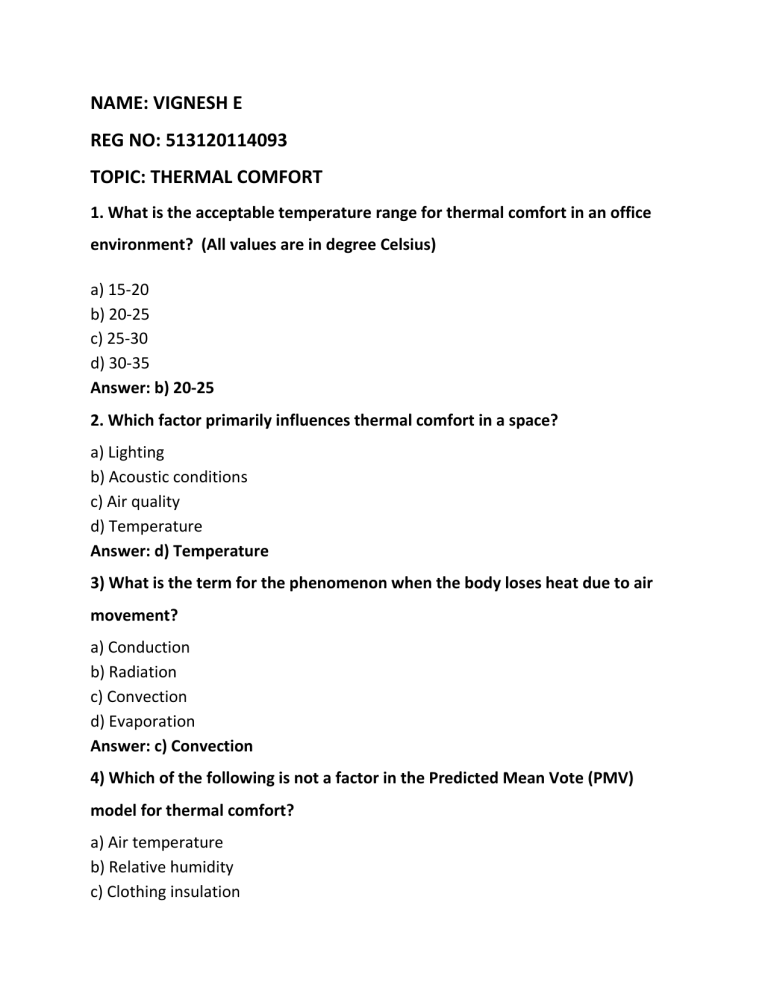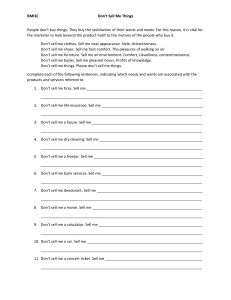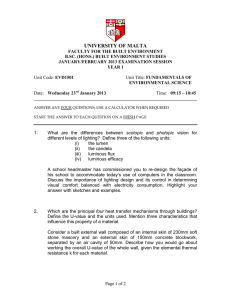
NAME: VIGNESH E REG NO: 513120114093 TOPIC: THERMAL COMFORT 1. What is the acceptable temperature range for thermal comfort in an office environment? (All values are in degree Celsius) a) 15-20 b) 20-25 c) 25-30 d) 30-35 Answer: b) 20-25 2. Which factor primarily influences thermal comfort in a space? a) Lighting b) Acoustic conditions c) Air quality d) Temperature Answer: d) Temperature 3) What is the term for the phenomenon when the body loses heat due to air movement? a) Conduction b) Radiation c) Convection d) Evaporation Answer: c) Convection 4) Which of the following is not a factor in the Predicted Mean Vote (PMV) model for thermal comfort? a) Air temperature b) Relative humidity c) Clothing insulation d) Physical activity Answer: b) Relative humidity 5. What is the primary purpose of an HVAC system in maintaining thermal comfort? a) To provide adequate lighting b) To control humidity levels c) To regulate indoor air temperature d) To reduce noise levels Answer: c) To regulate indoor air temperature 6. Which body of standards and guidelines is widely used for evaluating and improving thermal comfort in buildings? a) ISO 9001 b) ASHRAE 55 c) LEED d) NFPA 70 Answer: b) ASHRAE 55 7. Which of the following is a common method for measuring thermal comfort in a building environment? a) Luminance measurement b) Sound level measurement c) PMV/PPD assessment d) Odor assessment Answer: c) PMV/PPD assessment 8. What does the term “Operative Temperature” refer to in the context of thermal comfort? a) The average temperature of the room b) The temperature of air c) The temperature of the radiant surfaces d) The temperature of the ground outside Answer: c) The temperature of the radiant surfaces 9. in thermal comfort studies, what does “Adaptive Comfort” mean? a) The comfort level that automatically adjusts based on clothing b) Comfort preferences that change seasonally c) The comfort level that adapts to the individual’s metabolic rate d) A comfortable seating arrangement Answer: b) Comfort preferences that change seasonally 10. Which type of clothing typically provides the least insulation and is suitable for warm environments? a) Heavy winter coat b) Sweater and jeans c) Shorts and a t-shirt d) Fleece jacket Answer: c) Shorts and a t-shirt


